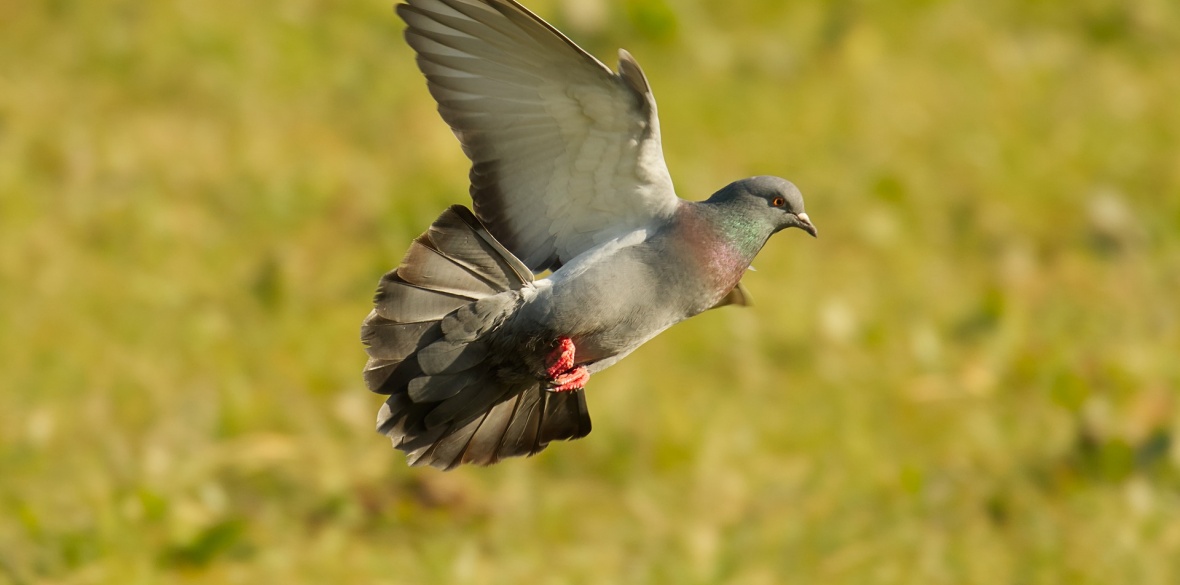This is the last article you can read this month
You can read more article this month
You can read more articles this month
Sorry your limit is up for this month
Reset on:
Please help support the Morning Star by subscribing here
MY FRIENDS Judith and Richard are just mad about birds. Many years ago I worked with Richard and still remember when he rescued an injured bird — a thrush, I think. He kept it in a comfy nest in a cardboard box and over several weeks nursed it back to health and eventual release.
Jude and Rich used to have couple of dovecotes in their garden that attracted both white doves and various kinds of wild pigeons. I was always amazed by the diversity of pigeon like birds that visited the dovecotes, even some top-flight racing pigeons.
Officially there is no division between pigeons and doves. Depending on the situation and your views, both can either be attractive pets or ’orrible pests. Worldwide there are more than 250 distinct types of doves and pigeons.
Pigeons and doves both share tiny, slim bills, round heads, curvy bodies with soft and very dense feathers, thin and short legs, tapered wings, and crooning or cooing calls.
Our wild rock dove was once a domesticated dove just like town pigeons and the feral pigeon. There are many types of pigeons living in Britain.
Let’s take a quick look at some of the most common ones. I’ll start with the stock dove, often mistaken for the wild rock dove and
feral pigeons due to their size and plumage.
Stock doves are easily recognisable. They have mostly blue and grey bodies and a unique bottle green band located on the back of their necks.
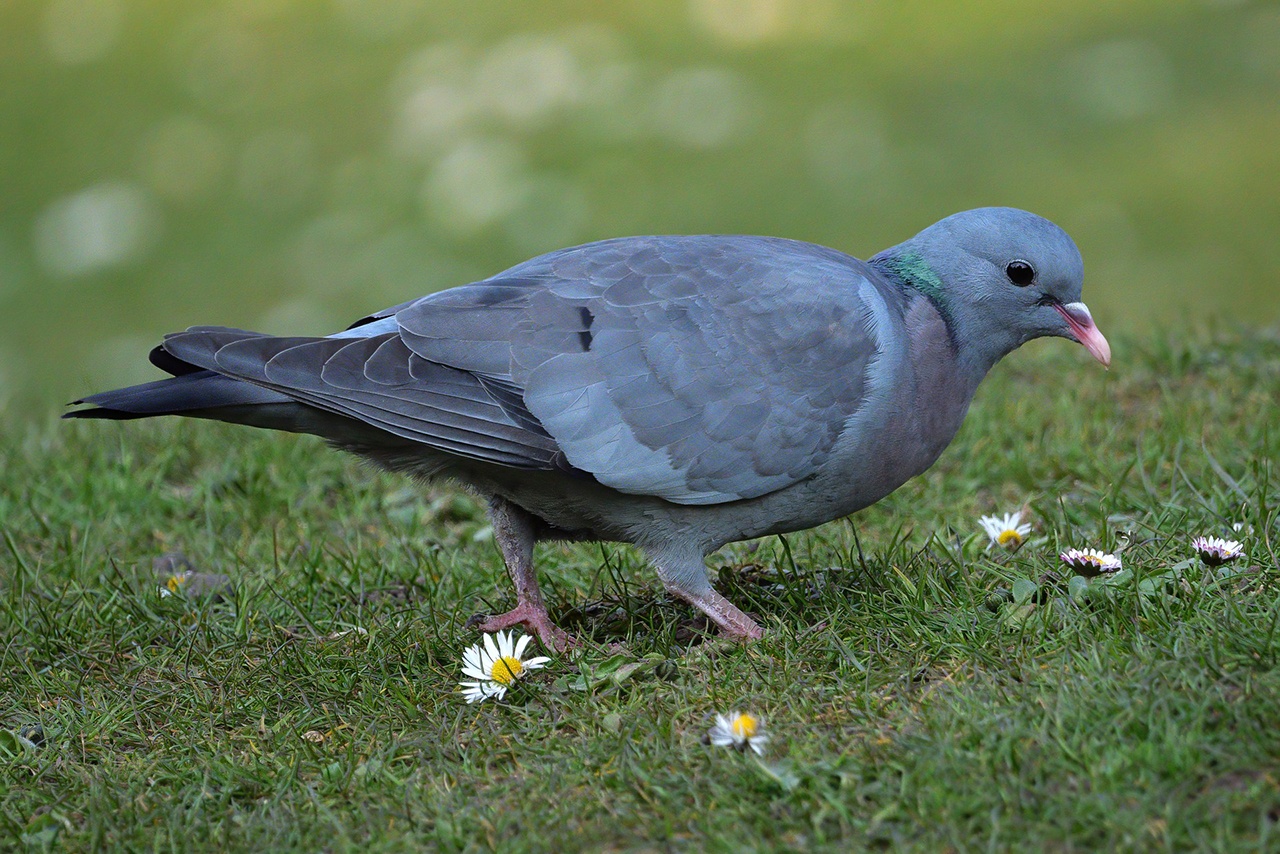
Rock doves were once domesticated birds that our ancestors raised for food. They have a wide range of shades, but darker colours usually dominate their feathers. They are known as persistent pests in tall buildings that resemble their original high cliff homes.
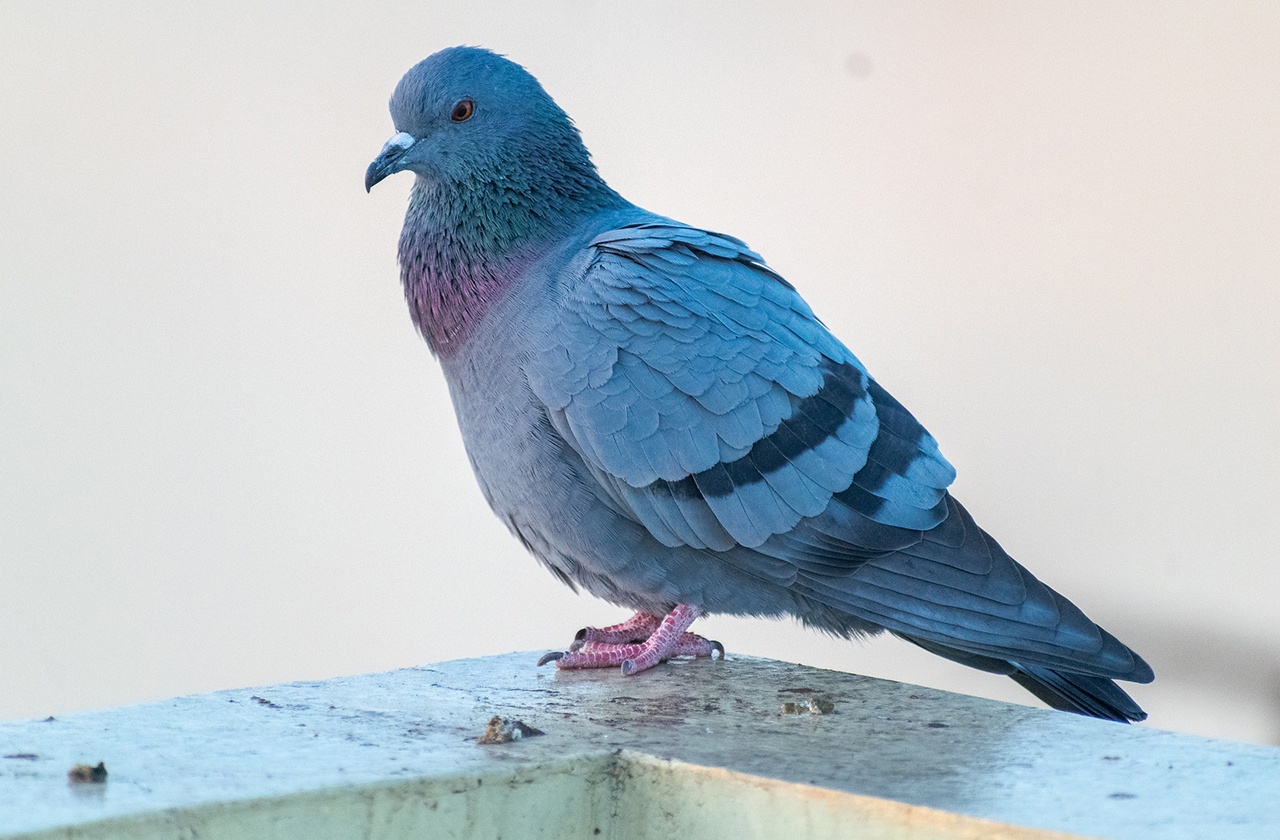
Collared doves have pale pink and brown colours and a unique black collar on their neck. They also have slightly red feet and distinctive red eyes.
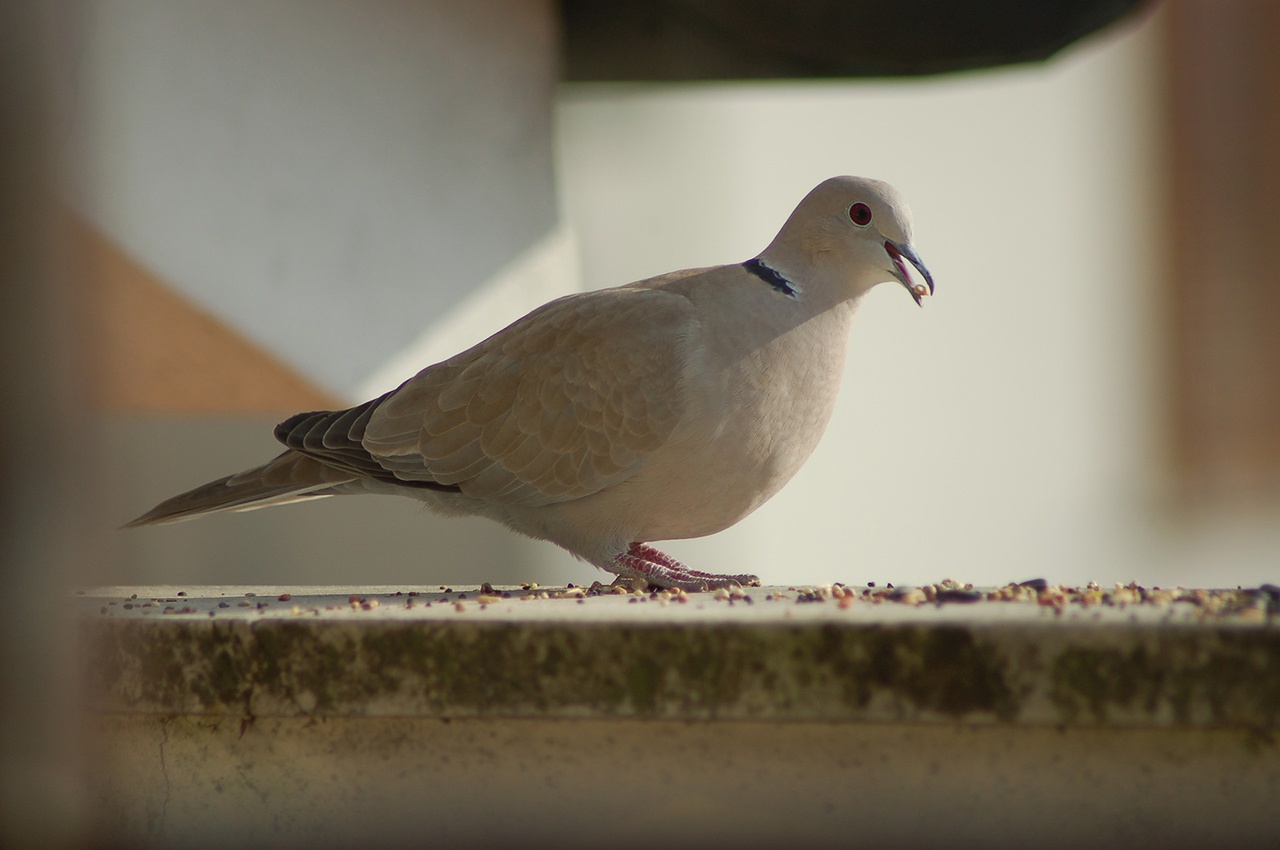
The turtle dove is smallest of the group, only just a bit larger than a blackbird. It is a little bit darker compared to the collared dove with a black and chestnut pattern on the wings that make them easily recognisable. Turtle dove numbers are dropping.
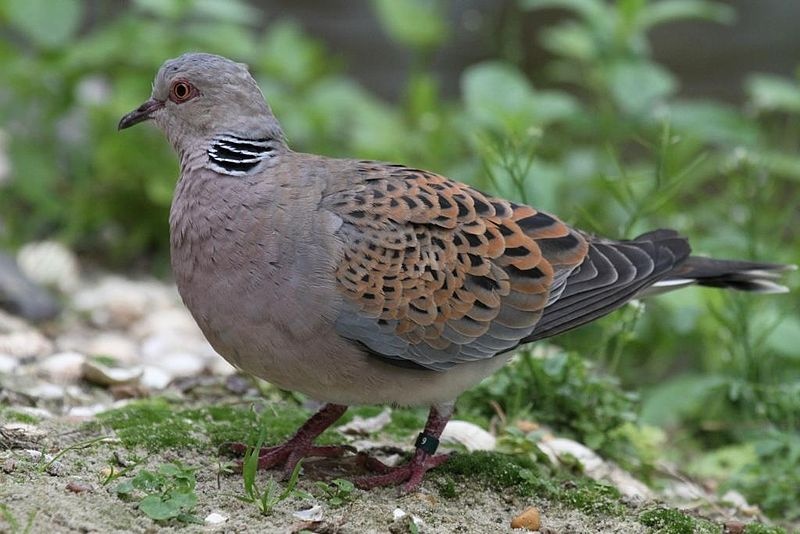
Domestic pigeons and racing or homing pigeons have similar characteristics. A homing or racing pigeon, often bred just for racing, has an inbuilt navigation system that allows it to remember and return to its original home from long distances.
The large and noisy woodpigeon is the most commonly found and largest pigeon in Britain. It can be identified through its majority grey colouring with white neck patches and white patches on the wings which can be seen clearly during flight.
Their blue neck and loud wing flap make them easy to identify. They are often considered pests and sometimes killed as vermin.
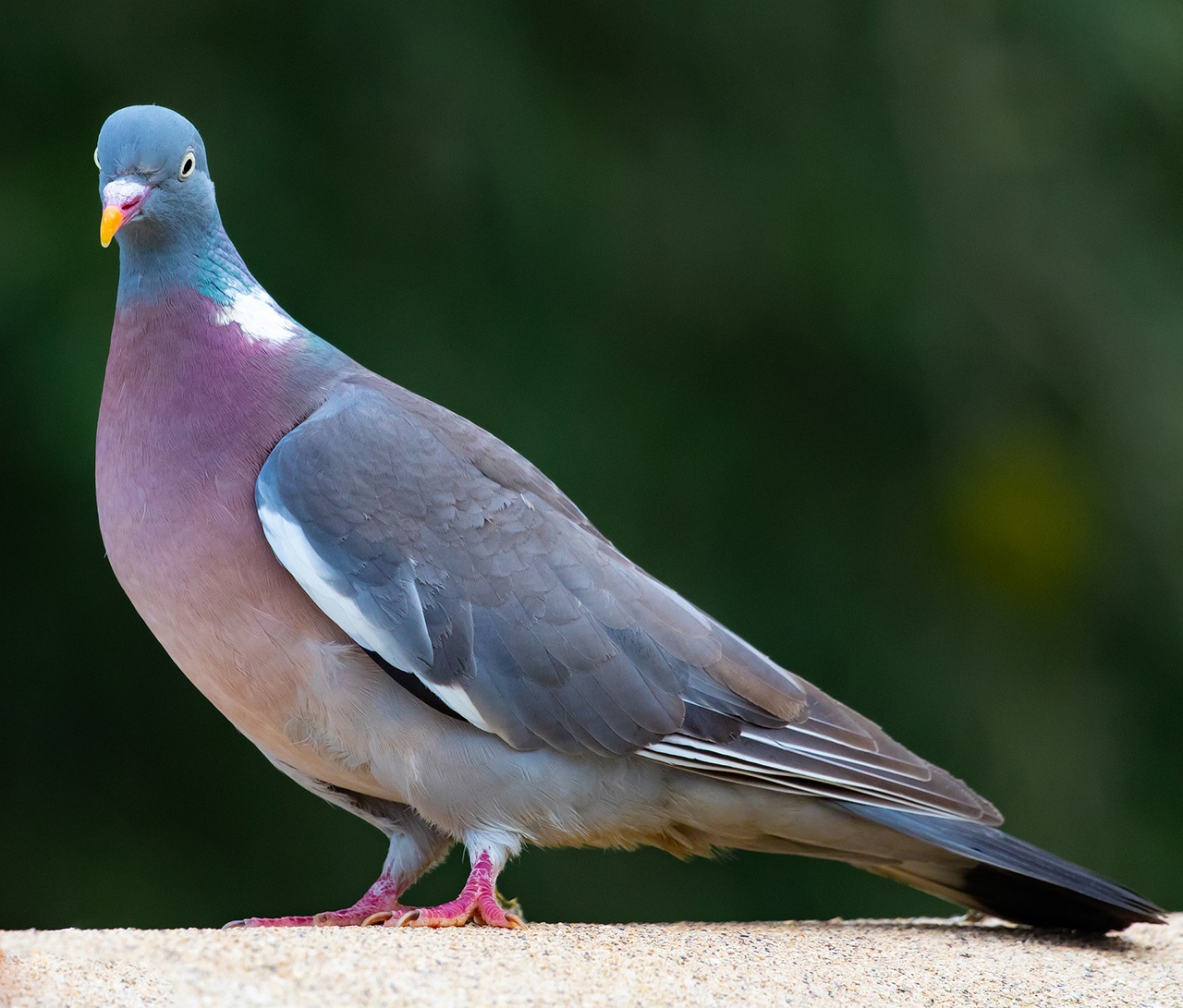
They’re often much happier when left to be part of our countryside wildlife, with the cooing call of the woodland pigeon being a familiar sound in our woodland areas.
Sadly, these pigeons have become more common and apparent in our inner-cities and towns where they live messily off scraps and crumbs.
King pigeons are specifically bred to provide us with food. Pigeon breast is becoming more and more popular as a restaurant dish. Size and excessive inbreeding can cause genetic problems which make it difficult for them to fly.
Band-tailed pigeons are named for their long, often grey-banded tail. Their distinctive white band on the back of the neck distinguishes them from other feral pigeons of a similar size.
They eat berries, nuts, and small insects in forests and woods. Very few live in urban environments.
The rock dove, or feral pigeon, is almost a British institution. It is a wild ancestor of the world’s domestic pigeons. Feral pigeons come in a variety of colours, commonly black, grey, blue, purple, and white with different coloured patches on their wings.
If you live in any large British city or other highly populated area in England you are likely to have come across a group of feral pigeons. In towns and inner cities they are considered a nuisance. Local authorities install deterrents such as large spikes on roofs.
These birds are far from stupid. They will group where they get fed — and feral pigeons will even recognise a person who regularly feeds them. In any public place, especially one with a range of food stalls or shops, there are going to be pigeons.
Feral pigeons nest in cities too. Abandoned or derelict buildings are commonly prime locations for feral pigeons to nest and breed in a large wild group.
England is home to an estimated 18 million feral pigeons. A mating pair of feral pigeons can breed up to six times a year.
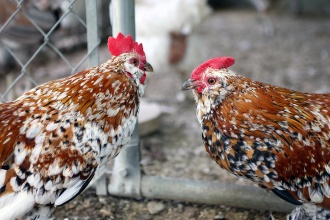
The other birds that Jude and Rich entertain at home are bantams. These are beautiful half-size chickens that, in summer, make for wonderful entertainment when we join them for a drink in the garden. The birds pick around eating all sorts of garden pests.
If we are really lucky and have behaved ourselves we may get a box of a dozen miniature bantam eggs to take home. Some might be brown speckled, some palest blue and pastel green. They make great eating but you might need a dozen to make a decent omelette for two.
Jude and Rich buy or barter fertilised eggs with other enthusiasts and have the bonus of watching the tiny feathered bundles hatch from the eggs. It can be a bit of a gamble. They only raise female birds as cocks can be very noisy and annoy neighbours.
What breeds hatch too can sometimes be unpredictable. Will the new hatchlings turn out to be silkies, rumpless araucanas, blondies, cochins, faverolles, frizzles, laced houdans, wyandottes, buff orpingtons or any of hundreds of varieties and crosses?
The name bantam comes from the port of Bantam in what is now Indonesia. European sailors — many Dutch — took the little birds on their sea journeys for both eggs and meat.
On our last visit Jude and Rich’s garden seemed quiet and lifeless. Due to the avian flu all small and large poultry keepers have been told to keep birds inside and to avoid any contact between captive and wild birds.
This flu has hit hard at wild and farmed birds all over this country and Europe. It actually arrived too late to spoil the Christmas turkey trade but it is still causing problems for the egg, chicken, duck and goose farming industries.
This flu is yet another reason why the poultry industry should look hard at the way it raises these living animals.

